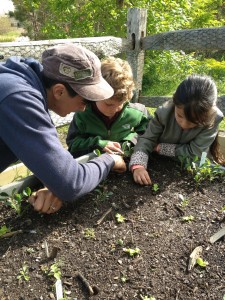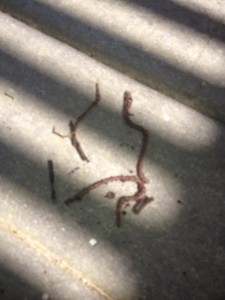Each year at the Truro Community Children’s Garden, an animal is selected as the featured “pet” for the year. The nascent gardeners learn about them, draw pictures of them and feature them in garden displays as the season draws to a close.
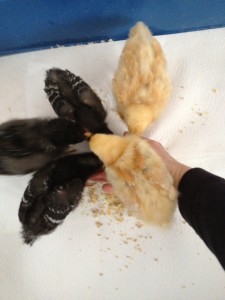 Last year the children selected chickens. They learned about the obvious benefit of eggs and meat but also the wonderful value of Chicken Poop. This year we turn subterranean to our best garden friend, the Earthworm.
Last year the children selected chickens. They learned about the obvious benefit of eggs and meat but also the wonderful value of Chicken Poop. This year we turn subterranean to our best garden friend, the Earthworm.
The importance of healthy soil has been a continual theme as children learn best practices for gardening. Adding aged chicken poop is one way to condition the soil. An even more elegant solution is to cultivate an environment that encourages earthworms to grow. The children learn how these small creatures process waste and leave the soil replenished with a perfect balance of nutrients, which the plants love. Happy plants lead to bountiful harvests!
Many folks find these squirmy creatures less than appealing. Folks suffering from Tactile Defensiveness report nausea and gagging when confronted with the slimy wrigglers. I remember a sense of bravado (in my tomboy days) digging up nightcrawlers with my dad and then courageously threading them onto a fish hook.
Experiences with Earthworms so far:
- Our little gardeners love to find them as they root around in the soil planting and weeding.
- The worms have been described as “cute” on more than one occasion.
- Record keeping has begun to assess how much the worm population multiplies.
- Rainy day drawing sessions have offered the opportunity to learn about the anatomy of a worm.
- Worms are great to draw. Simple lines are manageable for the youngest children. Very fine intricacies of the worm’s segmented body taps into the creative talents of the older child.
Benefits of Working with Earthworms
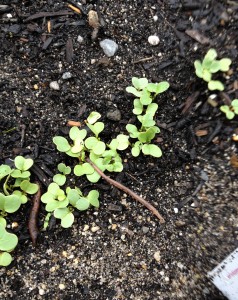 Perfect Case Study of how the Eco-system can work in a balanced way
Perfect Case Study of how the Eco-system can work in a balanced way- Terrific introduction to the Science of Growing and understanding how certain insects and plants are “Beneficials” in the Garden
- Searching for Earthworms is an excellent visual perception task
- Touching Earthworms is a demanding tactile tolerance task
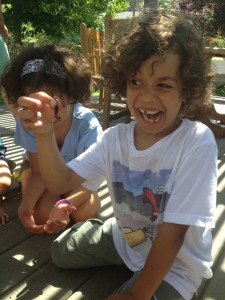 Picking up and holding the squirmy creatures requires fine motor finesse
Picking up and holding the squirmy creatures requires fine motor finesse- Learning to love worms can broaden appreciation for living beings vastly different from the creatures children are most familiar with.
Wikipedia has a very nice review of almost everything you’d ever want to know about the Earthworm
This post reflects the partnership and creative collaboration between The Motor Story, Sustainable CAPE , Truro Public Library and Truro Recreation.
